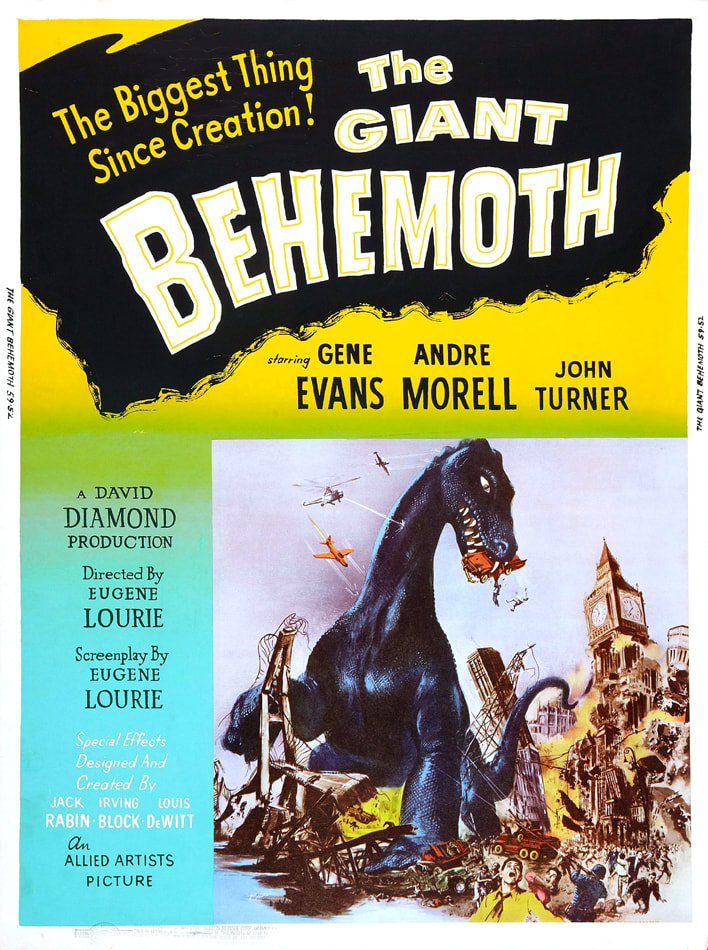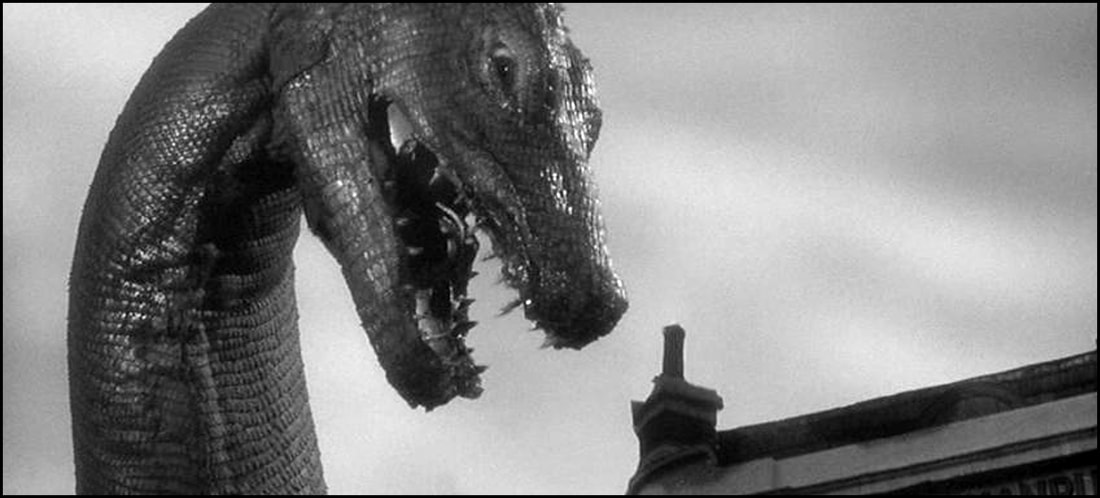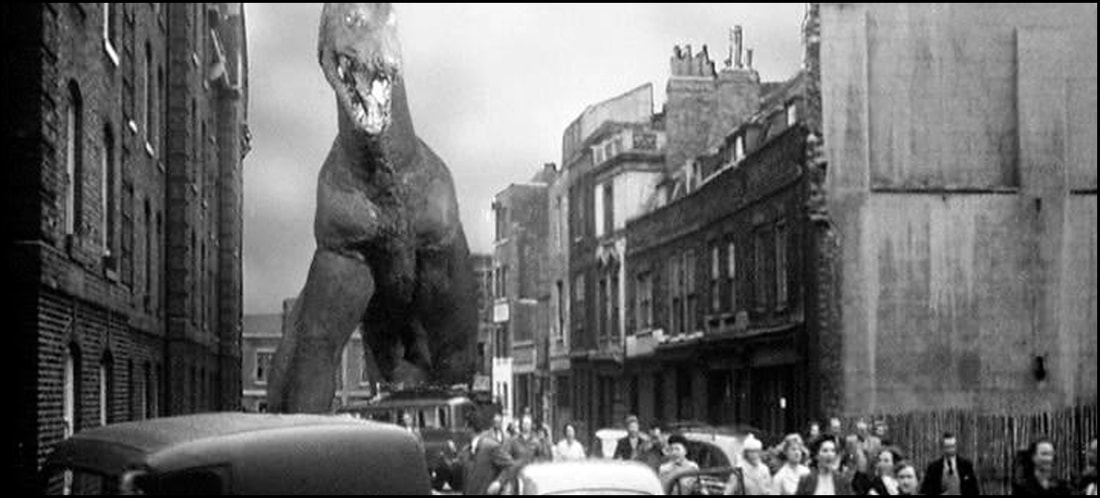With the emergence of atomic power -- along with its incredibly destructive potential -- the storytellers and mythmakers in Hollywood and beyond went to work right away, capitalizing an awful lot of creative potential around stories to display the ills of splitting the atom. While Godzilla (1954) probably remains the biggest of the bunch (pun intended), there are an incredible number of films that either directly or indirectly attempted to persuade audiences away from pursuing such dangerous science. In fact, when the Science Fiction and Fantasy films of the 1950's weren't convincing enough, the rabble-rowsers turned to much more conventional but equally frightening dramas in the late 50's and throughout the 1960's, hoping to minimally shine a light on the eventual dark fate awaiting all of mankind at the cost of going nuclear.
For all intents and purposes, The Giant Behemoth (aka Behemoth, The Sea Monster) pretty much follows in Godzilla's already trod footsteps. oceanic atomic testing brings this dormant monster back to life, and London winds up being terrorized as a result of mankind's hubris.
Precisely where the idea came from, however, is a bit of a mystery.
IMDB.com shows the original story as being credited to both Allen Adler and Robert Abel. Diving into Wikipedia.org, Adler's biography is a bit slim, but the database does show that he was a screenwriter tied curiously back to 1956's landmark Forbidden Planet (with Irving Block). Apparently, Adler spent his last days blacklisted from Hollywood for having been linked somehow with Communist sympathizers exposed during the McCarthy hearings. Furthermore, Adler is cited as being an author of Science Fiction works on Wikipedia.org, but the only listing I can see is for a 1957 novel titled "Terror On Planet Ionus" (or "Mach 1: A Story Of Planet Ionus"). The novel is cited as having several publications on the Internet Speculative Fiction Database, so there's that.
Sadly, I'm unable to locate any meaningful information on Robert Abel. He is listed on IMDB.com, but just how he's tied directly back to the story for Behemoth is unclear. In fact, his citation implies that he perhaps wasn't originally included with the project and has since been added after-the-fact. What that means is entirely up to anyone's speculation. Perhaps his participation is a bit shrouded with mystery for good reason. Who can tell?
The film's screenplay shows attributed to both Daniel James and director Eugène Lourié. Again, the supporting details on James are light, but Lourié appears to have enjoyed a reasonable fruitful career as both a director and art director in the industry. The Beast From 20,000 Fathoms (1953) is cited as his first directorial effort, but he went on to bring other genre properties to the silver screen including Behemoth, The Colossus Of New York (1958), Gorgo (1961), and Godzilla (1977). From that resume it looks like 'big things' may've been his specialty! Interestingly enough, his work on 20,000 Fathoms had him -- along with others -- receiving a 1954 Hugo Award nomination in the category of 'Best Dramatic Presentation,' an award whose trophy was ultimately awarded to 1953's The War Of The Worlds.
As always, thanks for reading ... and live long and prosper!
-- EZ







 RSS Feed
RSS Feed